Rose Satchmo: All About Bush Growing
Rose by right belongs the title of queen of the garden. When bright extraordinary buds bloom, the plant overshadows even the most saturated flowers. She has a unique beauty and simplicity at the same time. Therefore, gardeners strive to plant numerous varieties of this beautiful flower.
Among the new varieties of shrub roses, a scarlet inflorescence stands out, called the Satchmo rose. Before planting, it is recommended that you familiarize yourself with an interesting variety and identify its breeding methods and growing conditions.
Content
- Description and benefits of the variety
- Growing conditions
- Reproduction methods
- Terms and rules for planting a seedling
- Care Tips
- Pruning and preparing for winter
- Possible growing problems
Description and benefits of the variety
The Satchmo rose bush belongs to the Floribunda rose garden grouping. This group combines abundantly flowering varieties. The rose was bred in 1970 in the well-known nursery, founded in 1931 by the Topalovich Brothers. But the shrub species has not become widespread, although in recent years Russian gardeners have paid attention to this original flower.
Features of the structure of the bush:
- The shrub is distinguished by large inflorescences. In appearance, the Satchmo rose is endowed with the shape of a tea rose, of hybrid origin. The flower has a deep red hue with an orange tint.
- Flowers appear on one strong trunk in large numbers, outwardly resemble a large brush. Each inflorescence has a semi-double shape, the bud contains from 17 to 25-27 petals glowing with a scarlet hue. The diameter of each bud when opened is up to 8 cm.
- A shrub as an independent plant is not considered tall. Its height reaches only 65-75 cm in height. The structure of the plant is dense, the stem is strong, but short in length. All shoots extending from the root system are densely located near the main stem. In width, the shrub grows up to 50 to a maximum of 60 cm.
- The leafy plates of the rose are standard size, glossy in appearance and have a dark green tone. There are small notches along the edge of the leaf.
- When the plant blooms, roses give off a delicate scent of medium hue. He gently envelops, does not impose. Shrub budding begins in the last days of spring or in the first week of summer. The duration of the flowering of the fragrant rose bush is long. It can, under favorable conditions, form buds throughout the growing season.
The big plus of the Satchmo rose is its increased winter hardiness. It retains its vital activity at subzero temperatures down to -23 ..- 25 C. In colder regions, in the north, the rose should be covered for the winter, sprinkled on top with a large snowdrift. In addition, the plant is highly resistant to various diseases: powdery mildew and black spot.
Growing conditions
In order to properly plant and grow a worthy plant, you must adhere to the rules for growing the Satchmo rose shrub:
- Choose only high-quality seedlings - cuttings purchased from hands may not meet the declared characteristics of the variety. Therefore, it is better to purchase seedlings from specialized nurseries, preferably with a flowering bud for clarity. It is best to choose plants with a closed root system, but with the appeared leaf plates. So it will be seen that the bush is alive. Specimens already rooted are transplanted by the transshipment method, they root better in the chosen place and are less likely to be exposed to various diseases. It is also worth purchasing the grafted options. They are resistant to diseases, pests and high temperatures. Planting should be carried out at the ideal time - if the seedlings have a root system, then you can choose a time for them in early spring, not earlier than May, but not later than June. For cuttings, a site is selected for planting in the autumn: from mid-September. The procedure can be carried out throughout the whole month, until the second decade of October. But such terms are possible only for southern cities. In the northern regions, it is preferable to plant in the spring, due to the fact that the autumn planting runs the risk of ending in failure.
- Choosing a location - roses from the floribunda series are very fond of the sun's rays, so the plant should be planted in well-lit areas. It is better if it is the southern or western side of the building, closed from northern winds and drafts. If you plant a shrub in the shade, then the rose will fade from lack of light and discard all formed buds. But at the same time, the constant stay of the bush in the sun leads to rapid flowering and the leaves of the plant receiving sunburn.
- Soil in the chosen place - the plant thrives on fertile soil with a lot of nutrients applied. The earth must pass well both water and nutrient oxygen. Do not root seedlings on clay or sandy soils. This is due to the fact that the clay does not contain the required nutrients, they additionally need to be saturated with peat, humus and compost... Sandy soils with a light structure, on the contrary, do not have the ability to retain moisture. Therefore, in them, the Satchmo rose quickly dries up and dies off.
Reproduction methods
Obtaining the original shrub is possible only when grafting plants. Planting with seed material for the Satchmo rose is not suitable. Propagation by seeds obtained from the Satchmo rose is necessary only in the case of growing sprouts by breeders to obtain a new variety of hybrid varieties.
In all other situations, the process of growing a bush from me is quite problematic and not reliable. In almost all cases of a plant grown from a seed, the maternal qualities of a harvested rose do not appear.
Therefore, it is best, if you want to get a second original of the bush, it is enough to root the stalk from the seedling. To do this, you should:
- Pick up a stiff sprout, no more than 8 cm in length. In this case, it is required to check that the upper cut is at right angles, and the lower one differs in cut by 45 degrees.
- When rooting, the groove in the ground should be 15 cm from the edge of the soil. The distance between adjacent cuttings is at least 20 cm. The hole in the soil must be strictly vertical. Otherwise, the bush will turn out to be tilted, which will subsequently affect its decorative effect and the beauty of its placement. The seedling is buried half its height in the ground, and it is recommended to cover it with a film or glass jar on top.
- Some adventurous gardeners cover the stalk with a plastic jar with a lid on top. On a hot day or if ventilation is necessary, the lid is unscrewed, which makes it possible for the plant not to rot and get saturated with fresh air.
Until the seedlings take root, as evidenced by the petal that has appeared, it is required to constantly water the plant and periodically air it.
Terms and rules for planting a seedling
The planting of rooted cuttings or purchased seedlings with a closed root system in the northern regions is carried out in the spring months. The ideal option for planting work is May-June. In the southern zones, planting can be carried out both in the spring and in the fall. The only caveat when planting in the south of the country is that the plant should be planted 30-45 days before the onset of a cold snap. This is required so that the shrub is well rooted and perfectly prepared for wintering.
To plant a rose bush, it is required to prepare a recess in the ground of at least 60 cm.On the bottom of the pit, lay a layer of up to 10 cm of drainage. For this, broken brick, sea pebbles, expanded clay, crushed stone or small gravel are suitable. The next layer is to apply fertile soil containing organic fertilizers, such as compost, rotted humus, manure. Also, the thickness of the layer should be at a minimum size - 10 cm. After that, ordinary garden soil is poured in the form of a dome. It is leveled, and a small elevation is left in the middle.
If a self-grown seedling is planted, extracted from the soil, so that its rhizomes were freed from the ground, then before planting, the cutting should be placed in water with an added growth stimulator - Kornevin or Heteroauxin. Duration of soaking is 24 hours. With this tool, the root system of the plant quickly takes root and releases young roots.
Too long rhizomes need to be shortened.
The seedling is carefully inspected for damage to the root system, as well as areas with rot or other disease. When the latter is detected, the affected roots are cut off to a healthy area, and sprinkled with crushed activated carbon. A seedling is placed on the formed hill. All its rhizomes are gently straightened in different directions. After that, the procedure for filling the soil onto the root system is carried out. The process should be monitored to prevent the formation of voids. Otherwise, it is possible to provoke in the future favorable conditions for the development of fungal microflora on the plant.
When planting a cuttings with a closed root system, it is not worth shaking off the soil from the roots. It is placed in a dug hole along with the ground. Along the perimeter of the soil, you only need to inspect the rhizomes and, if necessary, cut off the damaged ones, sprinkling with coal or ash... After filling the soil, the soil near the base of the plant should be pre-compacted and shed well.
Care Tips
In order for the Satchmo rose bush to develop qualitatively, it is required to fulfill all the conditions for watering and fertilizing, a loosening and pruning procedure is also periodically performed.
- Watering should be carried out with rose Satchmo in large quantities. The plant requires abundant and frequent application of nutrient moisture. If the weather conditions are hot, and there is no watering, then as a result of the drying out of the soil, the shrub sharply drops all the buds. Subsequently, during the growing season, the plant will no longer form an inflorescence. Although watering should be frequent, it is required to control so that the soil near the base does not turn into a swampy substance. In such conditions, the root system begins to rot, which adversely affects the health of the plant, it may eventually die. After a long hot day, it is recommended to lightly spray the leaves of the bush. This procedure will have a positive effect on the rose, the bush will become fresher and greener.
- Loosening should be carried out periodically. It is required in order to break the crust formed from frequent watering on the surface.In addition, loosening not only allows moisture to flow faster to the rhizomes, but also to saturate the root system with the necessary air. Also, loosening allows you to remove from the plant weeds overgrown by a number of, which draw out the nutrients required for the rose. After loosening, it is worth mulching the trunk circle. This procedure has a positive effect on the longer preservation of moisture in the soil, which makes it possible to water the rose bush of the floribunda family less often.
- Top dressing of roses is carried out only seasonally: in the summer they bring in phosphorus and potassium, and in the spring they feed them with nitrogen-containing preparations.
Pruning and preparing for winter
Pruning is a must for the Satchmo rose. When growing, the increase in diameter of the seedling should be controlled. In some cases, you have to carry out strong pruning, and in other situations, easy removal of unnecessary shoots is enough.
Thanks to timely and correct pruning, you can achieve the following results:
- The period of budding and flowering is extended.
- The bush is renewed - rejuvenating pruning is carried out.
- When removing excess growth, the shrub takes on an interesting decorative shape.
- By the timely removal of faded buds, flowering resumes, new buds are released, and the flowering period increases.
- After eliminating some of the details of the shrub, it is possible to get rid of the incipient disease.
The main event to eliminate excess growth is carried out at the moment the first leaves appear in the spring. The time was chosen optimally taking into account the winter frosts: all shoots damaged by frost or strong winds, as well as those damaged by the disease or settled parasites, are removed. Strong shoots are selected, no more than 2-4 buds remain on them, from which side branches will develop, forming a lush shrub. The length of the pruned shoots should not exceed 10-20 cm. In the main pruning, branches that are 2 years old at the time of pruning are subject to pruning. If the stalk appears weak, then it is cut almost under the base, leaving only 1 bud.
It is important to take into account such a moment that if the pruning was carried out strong, rejuvenating, then there is a possibility that the plant will bloom only in August or will not please with flowering at all this year. If the elimination of foliage was in a sparing size, then the budding process will not keep itself waiting long, starting at normal times - in May. Summer pruning is carried out after the bud has faded. Removing wilted inflorescences allows the Satchmo rose to bloom longer.
The rose definitely requires shelter for the winter.
If in the southern regions severe frosts are rare and it is possible not to cover the bush for the winter period, then in northern cities it is necessary to shelter and insulate the seedling for the winter. The procedure is carried out no earlier than on the street the thermometer shows a temperature of -7 C. The base of the bush in front of the shelter undergoes the procedure of hilling with soil, humus or compost. This is required so that the root system does not freeze. Do not spud with sawdust, peat or river sand. Such material absorbs moisture abundantly, which negatively affects the plant in the future.
Shelter is carried out with the help of spruce branches, which are laid directly on the bushes and secured with ropes. Additionally, next to the seedling, a wooden frame in the form of a cone is installed, which is covered with a film on top. In spring, with the onset of warm days, the film is first slightly opened for airing, and then completely removed.
Possible growing problems
Proper care is required to prevent disease or other growing problems. There are the following problems that may appear when growing the Satchmo rose from the floribunda family:
- Lack of nutrients such as nitrogen, iron, phosphorus, magnesium or potassium - the petals of the plant become smaller, gradually turn yellow and fall off. To eliminate the situation, top dressing should be applied minerals.
- Freezing of the root system - with poor-quality shelter or its absence in winter, the rhizomes tend to freeze. Due to this, black spots form on the leaves, they tear and fall off. To save the bush, you should dig up the plant and carefully examine the rhizomes. If necessary, trim the damaged areas and transplant to a new location.
- Stagnation of moisture in the roots - provokes the formation of fungal diseases. To prevent this condition, it is necessary to properly plant the plant.
- Not opening the buds, their wilting and dropping is an incorrectly chosen place of residence. In order for the buds to open in a timely manner, it is recommended to transplant the shrub to a sunny, well-lit place.
- Herbicide damage - the twisting of the leaf petioles in a spiral is recorded, the stems are bent, acquire a reddish tint. The identified symptoms are the result of contact with the bush of the substance with which the grass is poisoned. To prevent this condition, the treatment should be carried out away from rose bushes and not on a windy day.
Fulfillment of the rules for planting and growing Satchmo roses allows you to get a good seedling beautifully and blooming for a long time. If you tirelessly monitor the condition of the plant, then when minor signs of malaise appear, the problem can be eradicated in the bud.
Thus, the Satchmo rose is a variety of the floribunda family, characterized by a bright scarlet shade with a delicate orange tint. To grow it, you need to prepare a high-quality seedling, choose the optimal planting site and rooting according to all the rules. Otherwise, you should expect various problems when growing.
More information can be found in the video:




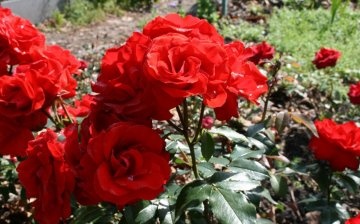

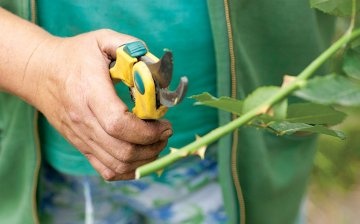
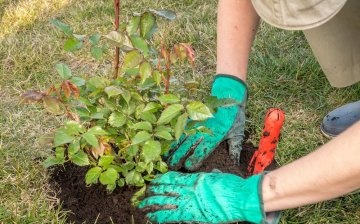
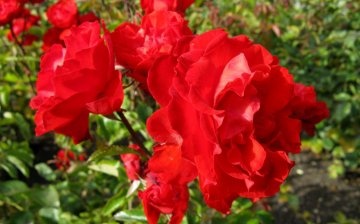
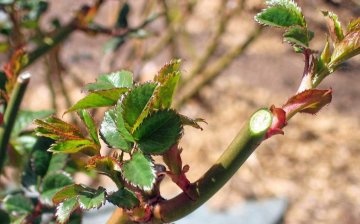
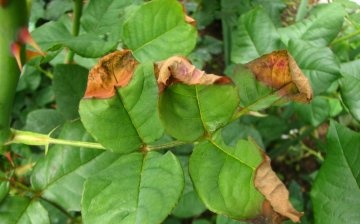








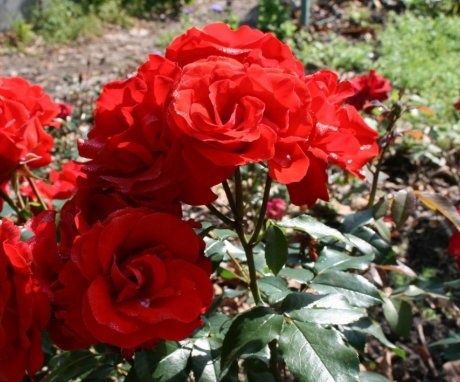
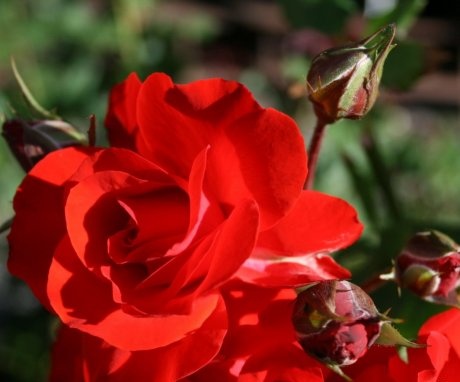

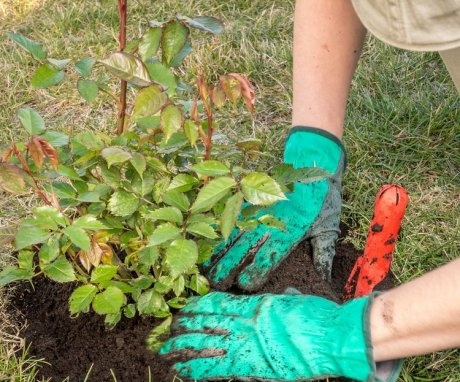
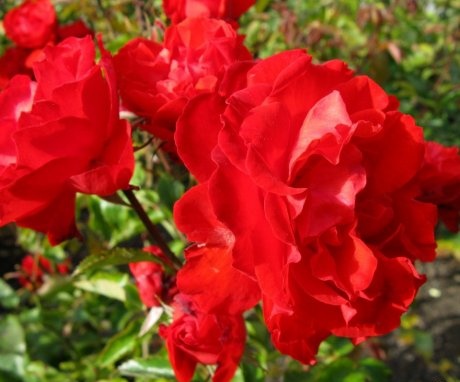
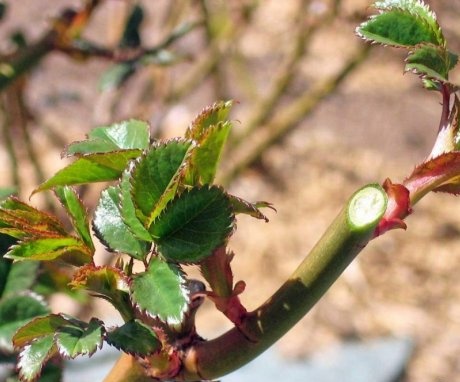
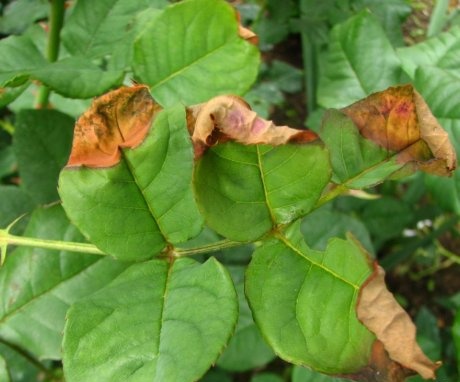
A very beautiful rose, but will the frost resistance of the plant decrease if propagated by cuttings?